10 Best Software Shortlist
Here's my pick of the 10 best software from the 18 tools reviewed.
Get free help from our project management software advisors to find your match.
Finding the best project management software with Google Calendar integration can be daunting. You're looking for a way to streamline your scheduling and improve project coordination, but the variety of options can be overwhelming. With years of experience in digital project management and a deep familiarity with a variety of productivity tools, I've sifted through the options to find the best for you. The right tool integrates with Google Calendar, allowing you to sync schedules, deadlines, and project milestones with ease. The benefit? It simplifies your planning process and ensures your team stays on track with real-time updates. This software eliminates the pain points of disjointed communication and scheduling conflicts, making project management a breeze.
Why Trust Our Project Management Software with Google Calendar Integration Reviews
We’ve been testing and reviewing project management software with Google Calendar integration since 2012. As project managers ourselves, we know how critical and difficult it is to make the right decision when selecting software.
We invest in deep research to help our audience make better software purchasing decisions. We’ve tested more than 2,000 tools for different project management use cases and written over 1,000 comprehensive software reviews. Learn how we stay transparent & our software review methodology.
How To Choose Project Management Software With Google Calendar Integration
As you work through your own unique software selection process, keep the following points in mind:
- User Experience: Choose software that provides an intuitive user interface, making the transition as smooth as possible for team members who are accustomed to Google Calendar's simplicity. Trello's card-based system is an example of a user-friendly interface that can reduce the learning curve and encourage team adoption.
- Collaboration Features: Effective collaboration tools within the project management software are vital for team productivity. Features that allow for easy sharing of calendars, task assignments, and updates are crucial. Platforms like monday.com facilitate team collaboration by integrating with Google Calendar, which helps keep everyone informed about project progress and deadlines.
- Customization and Flexibility: The ability to tailor the software to meet specific project and team needs is a significant consideration. Custom views and workflows can greatly enhance efficiency. Airtable, for example, allows for a high level of customization, which can be invaluable for teams with unique project management processes.
- Scalability: Ensure that the project management software can accommodate growth in terms of project size and team numbers. Solutions that can scale with your business will provide long-term value. Smartsheet is an example of a platform that offers scalability, supporting a wide range of project sizes and complexities.
These considerations are designed to address common pain points such as the need for real-time synchronization between project tasks and calendar events, the importance of user adoption through ease of use, the necessity of collaborative features for team alignment, the requirement for customization to fit various project demands, and the capability to scale with the organization's growth.
Best Project Management Software With Google Calendar Integration Reviews
Here are my detailed thoughts on each software on this list, including what they do best and where they struggle.
Wrike is a project management software designed to facilitate collaboration, resource sharing, and progress monitoring within a single platform.
Why I Picked Wrike: Wrike's robust integration with Google Calendar allows for the automatic synchronization of workflows, deadlines, tasks, and project milestones directly into your calendar. This means that all project deadlines are visible alongside personal and other work-related events, reducing the chances of overbooking and missing deadlines. The bi-directional sync also updates in real-time, so any changes made in Wrike are immediately reflected in Google Calendar and vice versa, keeping everything consistently up-to-date. Additionally, Wrike enhances this integration by offering customizable workflows that can trigger notifications and automate task updates based on calendar events.
Standout features & integrations:
Wrike's key features include real-time collaboration and communication, interactive Gantt charts, customizable dashboards and workflows, and advanced reporting tools, providing detailed insights into project performance, resource allocation, and productivity metrics. Wrike also has integrated time tracking, approvals, and a document management system with version controls.
Wrike integrates with Slack, Salesforce, Microsoft Teams, Adobe Creative Cloud, Google Drive, Microsoft SharePoint, OneDrive, Zoom, Power BI, and Tableau. It also offers an open API and a tool called Wrike Integrate for creating custom integrations and automating workflows across different business applications.
Pros and cons
Pros:
- Customizable dashboards
- Comprehensive reporting features
- Powerful proofing tool and approval workflows
Cons:
- Occasional slower platform loading times
- Feature-rich nature may be overwhelming for some users
Freedcamp is a project management software designed to help teams collaborate effectively. It is recognized as the best for offering unlimited project storage, ensuring that teams never have to worry about space constraints.
Why I Picked Freedcamp: I selected Freedcamp for this list due to its robust set of features that cater to various project management requirements, distinguishing it from other tools. I determined that Freedcamp is best for unlimited project storage because it allows teams to store as much project data as needed, which is crucial for organizations that handle large volumes of information.
Standout features & integrations:
Freedcamp's key features include task lists, subtasks, Gantt charts, Kanban boards, a calendar view, issue tracking, time tracking, and invoicing. It also provides a CRM system, wiki, and discussion boards.
The tool integrates natively with Google Calendar, Google Drive, Dropbox, OneDrive, Zapier, Toggl, and more.
Pros and cons
Pros:
- Flexible views including Kanban, Gantt, and calendar
- A diverse set of project management and collaboration tools
- Unlimited storage for files and projects
Cons:
- Limited third-party integrations compared to some competitors
- The interface can be overwhelming for new users
- Advanced features require a subscription to higher-tier plans
Trello is a web-based project management application that facilitates organization through a visual interface. It is best for visual task organization because its card-based design allows for easy tracking and management of tasks.
Why I Picked Trello: I selected Trello for its distinctive visual card system that differentiates it from other project management software. I determined it to be best for visual task organization due to its ability to provide a clear, visual representation of tasks and workflows, which is particularly beneficial for teams that prioritize visual project tracking.
Standout features & integrations:
Trello's key features include its board and card system, which can be customized to fit any project or workflow. It also offers Power-Ups to extend its capabilities and Butler for automation.
Trello integrates with a variety of tools, including Slack, Google Drive, Dropbox, Box, OneDrive, Salesforce, Evernote, Mailchimp, Zapier, Clockify, and Confluence.
Pros and cons
Pros:
- Extensive integration options
- Highly customizable boards
- Visual interface for easy task management
Cons:
- Power-ups may be necessary for advanced features, adding to costs
- Free version has limited functionality
- May be less suitable for complex project management needs
Todoist is a task management tool designed to help you organize work and life. It stands out for its natural language task entry, making it easy to add tasks just as you think of them.
Why I Picked Todoist: I chose Todoist for this list because it offers a unique approach to task management that prioritizes ease of use and efficiency. Its standout feature, natural language task entry, differentiates it from other tools by allowing users to quickly capture tasks in their own words. I determined it to be best for natural language task entry due to its ability to interpret and organize tasks based on everyday language, which is a game-changer for productivity.
Standout features & integrations:
Todoist's standout features include its natural language input, task prioritization, and productivity tracking. These features are designed to help users manage tasks with ease and stay on top of their work.
Todoist integrates natively with a variety of tools, including Google Calendar, Dropbox, Zapier, Slack, Amazon Alexa, Google Assistant, IFTTT, Toggl, Twist, and Gmail, facilitating a more connected and efficient workflow.
Pros and cons
Pros:
- Wide range of integrations
- Comprehensive productivity tracking
- Quick task entry using natural language
Cons:
- Minimum seat requirement for the Pro plan
- Some advanced features locked behind higher-tier plans
- Annual commitment required for best pricing
Asana is a work management tool that helps teams organize and track their work. It stands out for its versatility, accommodating a wide range of project management needs from task assignments to progress tracking and team collaboration.
Why I Picked Asana: I selected Asana for its comprehensive approach to work management, which allows for a high degree of customization and scalability. This adaptability makes it suitable for various project types and team sizes, setting it apart from other project management software. I determined Asana to be best for work management versatility because it offers a rich set of features that can be tailored to fit the unique workflows of different teams, ensuring efficient management of their work.
Standout features & integrations:
Asana's key features include customizable task lists, detailed project timelines, and robust communication tools that facilitate collaboration. The software's integration with Google Calendar enhances its functionality, allowing for synchronized scheduling and deadline tracking. Asana also offers native integrations with a variety of other tools, streamlining workflows and centralizing project management activities.
Asana integrates natively with Slack, Microsoft Teams, Google Drive, Dropbox, Box, Zapier, GitHub, Jira Cloud, Salesforce, Adobe Creative Cloud, and Tableau.
Pros and cons
Pros:
- Wide range of integrations
- Extensive customization options
- Intuitive design and user experience
Cons:
- Limited reporting capabilities on basic plans
- The initial setup can be complex
- Higher cost for premium features
Flowlu Tasks is positioned as an all-encompassing solution for business management. It is designed to streamline operations by integrating various business processes into one platform. Flowlu Tasks stands out as the best tool for all-in-one business management due to its comprehensive suite of features that cater to different aspects of running a business, from project management to finance.
Why I Picked Flowlu Tasks: I chose Flowlu Tasks for this list because it offers a unique combination of project management, CRM, invoicing, and financial management tools all in one place. This integration is what makes it different from other project management software. I believe it's best for all-in-one business management because it provides a holistic view of business operations, making it easier for managers to make informed decisions without having to switch between different software.
Standout features & integrations:
Flowlu Tasks boasts a robust set of features including project planning, task management, time tracking, and financial management tools. Its CRM functionality helps businesses manage customer relationships effectively, while the invoicing and financial reporting features ensure that financial management is integrated with other business processes.
The tool integrates natively with Google Calendar, Google Drive, Google Contacts, Google Mail, Zapier, QuickBooks, Xero, PayPal, Stripe, and Mailchimp.
Pros and cons
Pros:
- Financial management and CRM included
- Native integrations with popular tools
- Comprehensive business management features
Cons:
- Annual billing may not be preferred by all businesses
- Minimum of 8 users required for the lowest-priced paid plan
- Higher starting price point compared to some competitors
Gantter is a versatile project management tool that integrates directly with Google Calendar, facilitating better scheduling and project tracking. It specializes in creating dynamic Gantt charts within the Google Workspace ecosystem, offering users a comprehensive view of project timelines and resources.
Why I Picked Gantter: I chose Gantter because of its unique positioning within Google Workspace, making it particularly valuable for teams already embedded in Google’s ecosystem. Its integration with Google Calendar sets it apart from other project management tools by allowing real-time updates and synchronization of project schedules directly in users' calendars. I determined Gantter to be best for Google Workspace Gantt charts due to its specialized features that enhance project visualization and collaboration directly in a familiar interface.
Standout features & integrations:
Gantter excels with features like real-time collaboration, allowing team members to update tasks and timelines simultaneously. It supports task dependencies, enabling complex project planning with minimal effort. The tool’s reporting capabilities provide valuable insights into project progress and resource allocation, essential for effective project management.
Integrations include Google Drive for storage, Google Docs for documentation, Google Sheets for data management, Microsoft Project for easy migration, Smartapp.com Bamboo for HR management, Smartapp.com FieldChat for communication, Google Hangouts for team meetings, Gmail for communication, Smartapp.com InstaManager for task management, and Smartapp.com BuilderGen for automation in construction projects.
Pros and cons
Pros:
- Features robust collaboration tools that foster team participation and transparency
- Offers extensive Gantt chart customization options
- Integrates natively with the entire Google Workspace, enhancing workflow continuity
Cons:
- Limited advanced features compared to more specialized project management software
- Can be complex for new users, especially those unfamiliar with Gantt charts
- Requires a stable internet connection for effective use due to its cloud-based nature
TasksBoard is a desktop application designed to enhance the functionality of Google Tasks. It offers a full-screen environment to organize task lists efficiently, facilitates real-time sharing of these lists with team members, and allows integration of Google Drive documents and Gmail emails.
Why I Picked Qualtir TasksBoard: I selected Qualtir TasksBoard for its distinctive approach to augmenting Google Workspace. Unlike other tools that may operate independently or alongside Google Workspace, Qualtir TasksBoard embeds itself within the ecosystem, providing a layer of functionality that feels like a natural extension of the Workspace environment. Qualtir also offers aps for a ChatGPT workspace, GPT Gmail, Gmail tracking, mail merge, and Google Calendar Sync. While Qualtir apps may not be enough by themselves, they can be an excellent +1 enhancement to your existing project management solution and Google Workspace environment.
Standout features & integrations:
Qualtir shines with its ability to integrate deeply with Google Workspace, offering features that enhance Google's native applications. Users can benefit from advanced task management, AI-driven insights within Google Sheets, and more efficient email handling capabilities. These features are designed to fit into the Google Workspace interface, providing users with a cohesive and more powerful working environment.
Qualtir natively integrates with Google Tasks, Google Sheets, Google Docs, Google Slides, Google Forms, Gmail, and other Google Workspace tools.
Pros and cons
Pros:
- Focus on enhancing Google Workspace productivity
- AI-powered features within Google Workspace applications
- Deep integration with Google Workspace
Cons:
- Potential dependency on Google Workspace for all functionalities
- May require a learning curve to fully utilize all features
- Lack of transparent pricing information
forScale is a project management software designed to enhance planning and tracking within Google Workspace, integrating seamlessly with Google Calendar to maintain up-to-date scheduling across all project activities.
Why I Picked forScale: I chose forScale after comparing it with several other tools because it offers specialized integration with Google Workspace, making it a standout option for users who rely heavily on this suite for their daily operations. Its unique approach to enhancing project visibility and coordination within Google tools is why it's best for Google Workspace project planning.
Standout features & integrations:
forScale's key features include robust Gantt chart capabilities that sync directly with Google Calendar, an intuitive drag-and-drop interface for easy task management, and customizable views that adapt to different project needs. These features ensure that project managers can keep track of deadlines and resources efficiently.
forScale natively integrates with Google Calendar, Google Drive, Google Sheets, Gmail, Slack, Trello, Zapier, QuickBooks, Xero, and Salesforce. This integration suite enhances its functionality, making it a versatile tool for diverse organizational needs.
Pros and cons
Pros:
- Strong collaboration tools facilitate effective team communication and updates.
- Customizable project views allow for flexible management styles and requirements.
- Direct integration with Google Workspace streamlines project management within a familiar ecosystem.
Cons:
- Limited functionality outside Google integrations compared to more comprehensive PM solutions.
- The interface may require a learning curve for new users unfamiliar with project management tools.
- Dependency on Google Workspace might limit use for teams not using Google products.
GQueues is a task management tool that integrates deeply with Google Workspace.
Why I Picked GQueues: I selected GQueues for its exceptional integration with Google Workspace, which sets it apart from other project management tools. It is best for Google Workspace task management because it is specifically designed to complement and enhance the Google tools that teams are already using, ensuring a cohesive workflow within the Google ecosystem.
Standout features & integrations:
GQueues shines with its ability to synchronize tasks with Google Calendar and its Gmail integration for turning emails into tasks. The tool also supports attachments from Google Drive and task capturing via a Google Chrome extension.
The tool integrates natively with Google Calendar, Gmail, Google Drive, Google Chrome, Google Contacts, Google Workspace, Google Sheets, Google Docs, Google Slides, and Google Forms.
Pros and cons
Pros:
- No base fee or setup fee
- Two-way Google Calendar syncing
- Comprehensive Google Workspace integration
Cons:
- Volume discounts only available for 5+ licenses
- Free version has limited features
- Annual billing required
Best Project Management Software With Google Calendar Integration Summary
| Tools | Price | |
|---|---|---|
| Wrike | $9.80/user/month min. 2 seats | Website |
| Freedcamp | From $1.49/user/month (billed annually) | Website |
| Trello | From $5/user/month (billed annually) | Website |
| Todoist | From $4/user/month (billed annually) | Website |
| Asana | From $10.99/user/month (billed annually), which is the Premium plan's cost. | Website |
| Flowlu Tasks | From $29/user/month (billed annually, min 8 seats) | Website |
| Gantter | From $5/user/month | Website |
| Qualtir | From $7/user/month. | Website |
| forScale | From $7/user/month | Website |
| GQueues | From $3/user/month (billed annually) | Website |
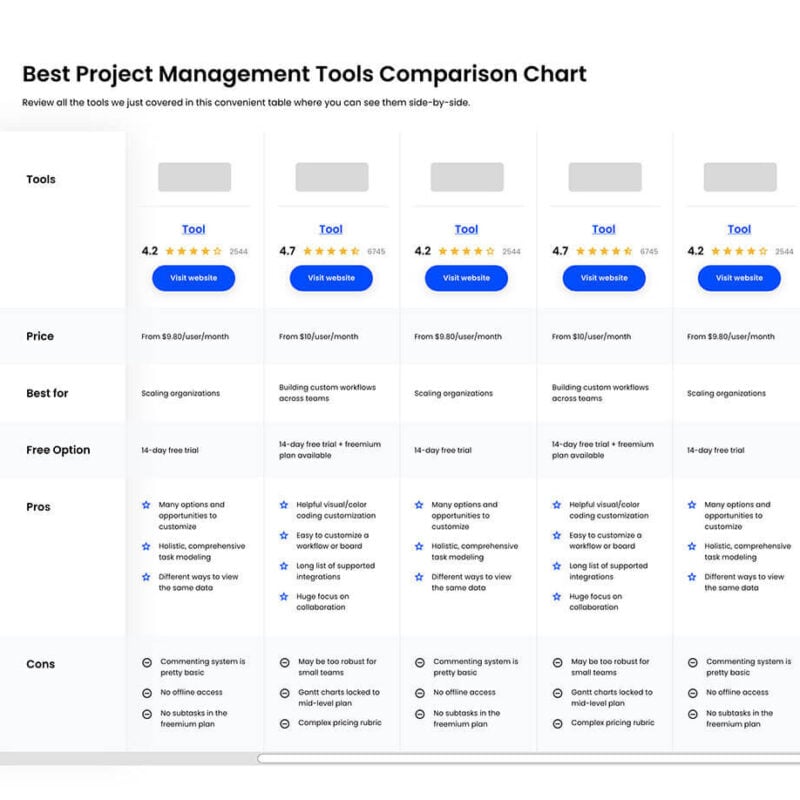
Compare Software Specs Side by Side
Use our comparison chart to review and evaluate software specs side-by-side.
Compare SoftwareOther Project Management Software With Google Calendar Integration To Consider
Below is a list of additional project management software with Google Calendar integration that we shortlisted, but did not make it to the top list. Definitely worth checking them out.
- Aha!
Best for product roadmap creation
- Kanbanchi Team
Best for critical path highlighting
- Kissflow
Best for low-code platform efficiency
- ClickUp
Good for custom task views
- Zoho Projects
Good for in-depth reporting
- Teamwork.com
Good for client work management
- Jira
Good for agile teams
- Smartsheet
Good for real-time collaboration
Selection Criteria For Project Management Software With Google Calendar Integration
Selecting project management software that integrates with Google Calendar requires a focus on functionality and specific use cases that align with the needs of the buyer. The criteria for choosing such software should address common pain points and the primary purposes for which the software is intended. As an expert who has personally tried and researched these tools, I have developed a set of criteria that are essential for evaluating project management solutions with Google Calendar integration.
Core Functionality: 25% of Total Weighting Score
- Synchronization with Google Calendar for real-time updates on project timelines and deadlines.
- Task assignment and tracking that reflects changes across both the project management platform and Google Calendar.
- Resource allocation visibility, allowing team members to see who is working on what and when directly within their calendars.
- Milestone integration, enabling key project milestones to be visible and tracked within Google Calendar.
- Notification and reminder systems that work across both platforms to keep all team members informed and on schedule.
Additional Standout Features: 25% of Total Weighting Score
- Innovative time tracking and reporting features that provide insights beyond standard offerings.
- Unique collaboration tools that enhance team communication and integration with Google Calendar.
- Advanced analytics and dashboard customization that offer a deeper understanding of project performance.
- Integration with other Google services, such as Google Drive, for a more cohesive workflow.
- Mobile app functionality that maintains full feature parity with desktop versions, including Google Calendar integration.
Usability: 10% of Total Weighting Score
- Intuitive drag-and-drop interfaces for scheduling and rescheduling tasks within the calendar.
- Clean and clear design aesthetics that reduce cognitive load and enhance user engagement.
- Responsive design that ensures full functionality across various devices and screen sizes.
- Simplified navigation that allows new users to quickly find the features they need without extensive training.
Onboarding: 10% of Total Weighting Score
- Comprehensive training materials, such as videos and how-to guides, that facilitate self-learning.
- Pre-built project templates that help new users get started with common project types quickly.
- Interactive product tours and chatbots that provide guided learning experiences.
- Webinars and live training sessions that offer in-depth knowledge and best practices for using the software.
Customer Support: 10% of Total Weighting Score
- Availability of a knowledgeable and responsive support team via multiple channels (e.g., email, chat, phone).
- A robust knowledge base or FAQ section that provides quick answers to common questions.
- Community forums or user groups that encourage peer-to-peer support and knowledge sharing.
- Service level agreements (SLAs) that guarantee timely responses and issue resolutions.
Value For Money: 10% of Total Weighting Score
- Transparent pricing models that clearly outline what is included at each subscription level.
- A comparison of feature sets against the price to ensure a competitive edge in the market.
- Flexible pricing plans that cater to different sizes and types of teams.
- Free trials or demo versions allow users to test the software before committing financially.
Customer Reviews: 10% of Total Weighting Score
- Consistent positive feedback across various user demographics and project types.
- High ratings for specific features such as Google Calendar integration and ease of use.
- Testimonials that highlight the software's impact on project efficiency and team collaboration.
- Analysis of negative reviews to understand potential shortcomings and areas for improvement
Trends In Project Management Software for 2024
Here are some current and interesting trends I'm noticing in project management software technology.
- AI-Driven Project Management: Artificial intelligence is becoming a cornerstone of project management software, offering predictive analytics and smart automation. Google Calendar integration allows for intelligent scheduling, where AI can suggest optimal meeting times based on project timelines and participant availability.
- Enhanced Remote Work Optimization: With remote work becoming the norm, project management tools are focusing on features that support distributed teams. Google Calendar's integration ensures that remote team members can sync their schedules with project milestones and deadlines.
- Real-Time Collaboration and Communication: Project management platforms are emphasizing tools that facilitate instant communication and collaboration. Integration with Google Calendar enables team members to schedule and join meetings directly from their project management interface, fostering a more connected team environment.
- Comprehensive Resource Management: Resource management is gaining traction as a critical component of project management software. Google Calendar integration helps in allocating resources effectively by providing a clear view of team member availability and project needs.
- Transparent and Accountable Project Tracking: Transparency and accountability are becoming more important in project management. Google Calendar integration allows stakeholders to have visibility into project schedules, deadlines, and progress, ensuring that everyone is aligned and accountable.
What Does Project Management Software with Google Calendar Integration Mean?
Project management software with Google Calendar integration is a digital tool that combines traditional project management features with the convenience of Google Calendar. It is utilized by project managers, teams, and organizations to synchronize project timelines, tasks, and milestones with their Google Calendar. This integration facilitates the coordination of schedules and resources, ensuring that project deadlines align with personal and team calendars.
The components of this software include task management, scheduling, resource allocation, and collaboration tools, all linked to Google Calendar. Users can view project tasks alongside personal or team events, set reminders, and receive notifications, which streamlines project tracking and time management. This integration aims to enhance productivity by providing a unified view of project timelines and personal schedules.
Features Of Project Management Software With Google Calendar Integration
Project management software with Google Calendar integration can significantly streamline workflow and enhance productivity. By syncing with Google Calendar, these tools help in keeping track of important deadlines, meetings, and milestones. Here are some key features to consider when selecting such software for your projects.
- Real-time Synchronization: This feature ensures that any changes made in the project management software are instantly reflected in Google Calendar. It is essential for maintaining an up-to-date schedule and avoiding conflicts or double bookings.
- Task and Event Creation: With this, users can create tasks and events within the project management software that are automatically added to Google Calendar. This feature is crucial for planning and scheduling, allowing team members to see their tasks alongside other calendar events.
- Shared Calendars: This allows multiple users to view and edit the same calendar. Shared calendars are vital for team collaboration, ensuring everyone is on the same page and aware of project timelines and deadlines.
- Reminder and Notification System: This sends out alerts for upcoming tasks and events. A robust reminder system is important to keep team members informed and prepared for upcoming deadlines or meetings.
- Customizable Views: Users can customize how they view their calendar within the project management software. Customizable views are important for personalizing the planning experience and focusing on the most relevant information.
- Drag-and-Drop Rescheduling: This feature enables users to reschedule tasks and events by simply dragging and dropping them to a new date or time in Google Calendar. Drag-and-drop rescheduling is crucial for flexibility and quick adjustments to project plans.
- Time Tracking: Integration with Google Calendar can include time-tracking features for tasks and events. Time tracking is important for monitoring progress and ensuring that projects stay on schedule.
- Resource Management: This helps in allocating resources and avoiding overbooking. Effective resource management is important for maximizing productivity and ensuring that all tasks have the necessary personnel and tools.
- Color Coding and Labels: Users can color-code tasks and events and add labels for easy identification. Color coding and labels are important for organizing and quickly locating specific items within a busy calendar.
- Privacy and Sharing Controls: This feature allows users to control who can see or edit their calendars. Privacy and sharing controls are important for maintaining confidentiality and managing access to project information.
Selecting the right project management software with Google Calendar integration can make a significant difference in how teams collaborate and manage their time. These features not only help in keeping individual schedules organized but also ensure that the entire team is synchronized and working efficiently towards common goals.
Benefits Of Project Management Software With Google Calendar Integration
Project management software with Google Calendar integration streamlines the way organizations and users manage their time and resources. This integration brings together the robust features of project management tools with the accessibility and familiarity of Google Calendar, offering a cohesive solution for managing projects and schedules. Here are five primary benefits that users and organizations can enjoy:
- Improved Visibility and Transparency: Sharing real-time updates and schedules with stakeholders becomes effortless, enhancing the overall transparency of project timelines and deliverables.
- Enhanced Collaboration and Communication: Automatic notifications and reminders keep teams aligned and informed about project milestones and deadlines, fostering a collaborative work environment.
- Increased Productivity: The automation of calendar entries reduces manual entry errors and saves time, allowing teams to focus on the work that matters most.
- Faultless Access Across Devices: With Google Calendar's cross-platform capabilities, team members can stay updated on project schedules no matter where they are or what device they're using.
- Resource Allocation and Compliance Tracking: Integrating resource scheduling with employee calendars helps in the efficient utilization of assets and ensures compliance with organizational policies and regulations.
The integration of Google Calendar with project management software is a strategic move that can lead to more organized, efficient, and collaborative work within any organization.
Costs And Pricing
When selecting project management software with Google Calendar integration, software buyers with little to no experience using the software should consider various plan options and pricing structures.
Below is a summary of plan options and their pricing, along with common features included in each plan. The average prices are based on the information gathered from the sources and may vary depending on the provider and any ongoing promotions or discounts.
| Plan Type | Average Price | Common Features |
| Free Plan | $0 (Free) | Basic task management, limited integrations, essential tracking features, access for a limited number of users |
| Individual Plan | $5 - $10/user/month | Task and project tracking, Google Calendar integration, basic reporting, limited automation features |
| Team Plan | $10 - $25/user/month | Advanced task management, team collaboration tools, shared calendars, enhanced reporting, some automation |
| Business Plan | $25 - $50/user/month | Full project planning capabilities, resource management, comprehensive reporting, extensive integrations, advanced automation |
| Enterprise Plan | Custom Pricing | Customizable features, dedicated support, advanced security options, tailored integrations, full automation capabilities |
Project Management Software With Google Calendar Integration FAQs
Here are some of the frequently asked questions I get asked about project management software with Google Calendar integration.
Can I view my project tasks directly in Google Calendar after integration?
Yes, once you integrate your project management software with Google Calendar, you can view your project tasks directly in Google Calendar. This integration typically allows tasks with due dates in the project management software to be displayed as events in Google Calendar, giving you a visual timeline of your project deliverables.
How does Google Calendar integration help in resource management?
Google Calendar integration helps in resource management by providing visibility into team members’ availability and schedules. Managers can easily schedule tasks and meetings based on when team members are free, reducing overbooking and ensuring a balanced workload. This visibility helps in optimizing resource allocation and improving productivity.
Is it possible to receive notifications for project updates through Google Calendar?
Yes, integrating project management software with Google Calendar enables you to receive notifications for project updates. You can set up reminders for upcoming deadlines or meetings, and get alerts for any changes made to tasks or schedules within your project management tool, ensuring you stay informed about the latest project developments.
What should I look for in project management software to ensure good Google Calendar integration?
When looking for project management software with Google Calendar integration, ensure that the software supports two-way synchronization, allowing for updates in either system to be reflected in the other. Also, look for the ability to filter which tasks and projects you want to sync, customizable notification settings, and ease of setting up and managing the integration.
Can I assign tasks to team members through Google Calendar after integration?
While Google Calendar itself does not typically allow for task assignment, the integration with project management software may enable you to assign tasks within the software, which then appear on the assigned team members’ Google Calendars. This ensures that task assignments are communicated effectively and deadlines are visible on team members’ calendars.
Will changes made in Google Calendar sync back to the project management software?
If the project management software offers two-way synchronization with Google Calendar, then changes made in Google Calendar should sync back to the project management software. However, the extent of what information syncs back can vary between different software, so it’s important to check the specific features of the integration offered.
Are there any limitations to using Google Calendar integration with project management software?
There may be limitations depending on the project management apps’ integration capabilities. Some common limitations include restrictions on the amount of data that can be synced, potential delays in synchronization, and limited ability to edit project details directly from Google Calendar. It’s important to review the integration features and any limitations before relying on it for project management.
What Next?
Want to connect with other digital project managers to share resources and best practices? Join our membership community and get access to 100+ templates, samples, and examples and connect with 100s of other digital project managers in Slack.
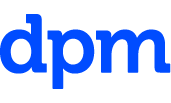
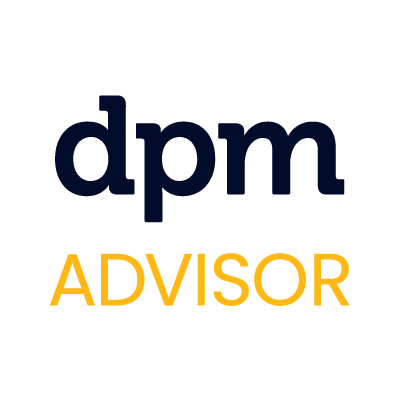
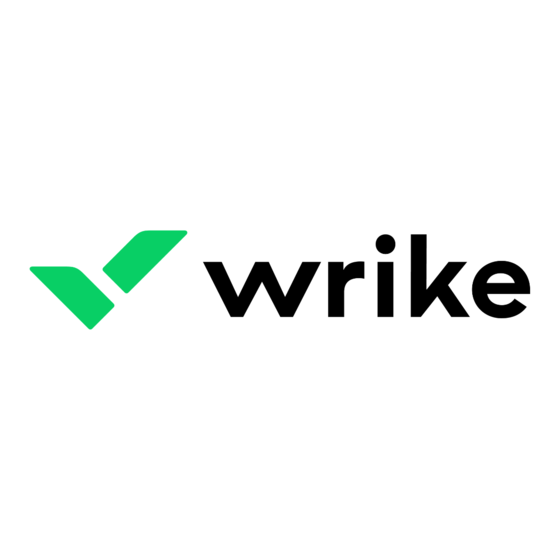
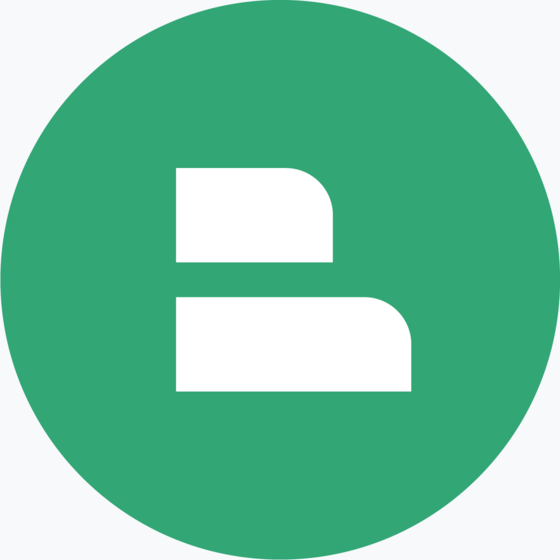
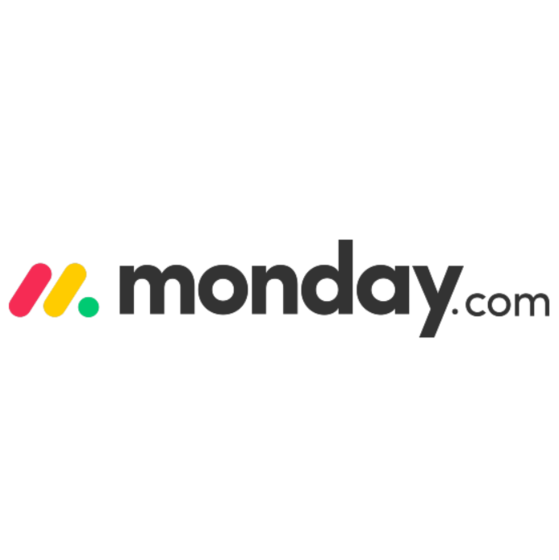
![Wrike screenshot - 18 Best Project Management Software With Google Calendar Integration [2024]](https://thedigitalprojectmanager.com/wp-content/cache/thedigitalprojectmanager.com/static/static.crozdesk.com/web-app-library-categories-providers-screenshots-001-823-732-pub-wrike-screenshot-1715102941.png)
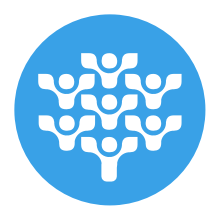
![Freedcamp screenshot - 18 Best Project Management Software With Google Calendar Integration [2024]](https://thedigitalprojectmanager.com/wp-content/cache/thedigitalprojectmanager.com/static/static.crozdesk.com/web-app-library-categories-providers-screenshots-001-823-609-pub-freedcamp-screenshot-1714711809.png)
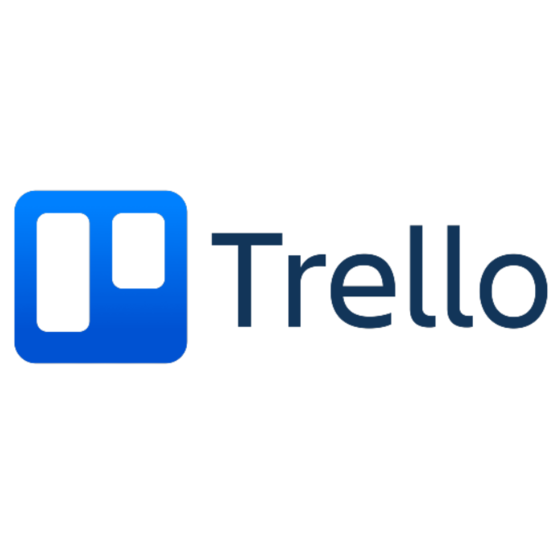
![Trello screenshot - 18 Best Project Management Software With Google Calendar Integration [2024]](https://thedigitalprojectmanager.com/wp-content/cache/thedigitalprojectmanager.com/static/static.crozdesk.com/web-app-library-categories-providers-screenshots-001-823-296-pub-trello-screenshot-1714708131.png)
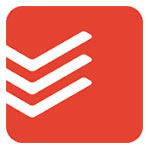
![Todoist screenshot - 18 Best Project Management Software With Google Calendar Integration [2024]](https://thedigitalprojectmanager.com/wp-content/cache/thedigitalprojectmanager.com/static/static.crozdesk.com/web-app-library-categories-providers-screenshots-001-823-605-pub-todoist-screenshot-1714711561.png)
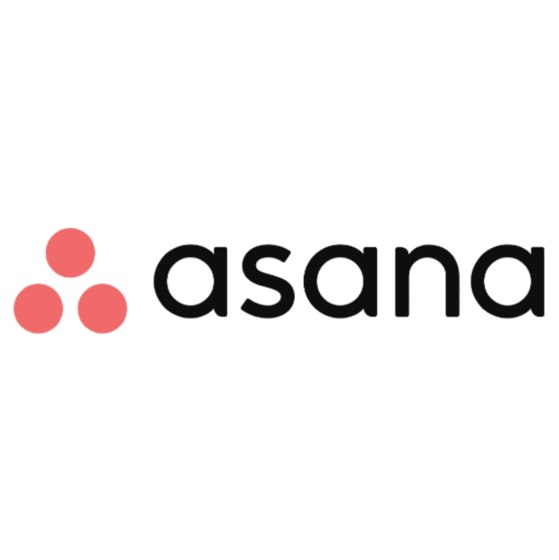
![Asana screenshot - 18 Best Project Management Software With Google Calendar Integration [2024]](https://thedigitalprojectmanager.com/wp-content/cache/thedigitalprojectmanager.com/static/static.crozdesk.com/web-app-library-categories-providers-screenshots-001-823-306-pub-asana-screenshot-1714711289.png)

![Flowlu Tasks screenshot - 18 Best Project Management Software With Google Calendar Integration [2024]](https://thedigitalprojectmanager.com/wp-content/cache/thedigitalprojectmanager.com/static/static.crozdesk.com/web-app-library-categories-providers-screenshots-001-823-444-pub-flowlu-tasks-screenshot-1714711382.png)

![Gantter screenshot - 18 Best Project Management Software With Google Calendar Integration [2024]](https://thedigitalprojectmanager.com/wp-content/cache/thedigitalprojectmanager.com/static/static.crozdesk.com/web-app-library-categories-providers-screenshots-001-823-297-pub-gantter-screenshot-1714708687.png)

![Qualtir screenshot - 18 Best Project Management Software With Google Calendar Integration [2024]](https://thedigitalprojectmanager.com/wp-content/cache/thedigitalprojectmanager.com/static/static.crozdesk.com/web-app-library-categories-providers-screenshots-001-823-608-pub-qualtir-screenshot-1714711671.png)

![forScale screenshot - 18 Best Project Management Software With Google Calendar Integration [2024]](https://thedigitalprojectmanager.com/wp-content/cache/thedigitalprojectmanager.com/static/static.crozdesk.com/web-app-library-categories-providers-screenshots-001-823-728-pub-forscale-screenshot-1714712190.png)

![GQueues screenshot - 18 Best Project Management Software With Google Calendar Integration [2024]](https://thedigitalprojectmanager.com/wp-content/cache/thedigitalprojectmanager.com/static/static.crozdesk.com/web-app-library-categories-providers-screenshots-001-823-724-pub-gqueues-screenshot-1714711977.png)